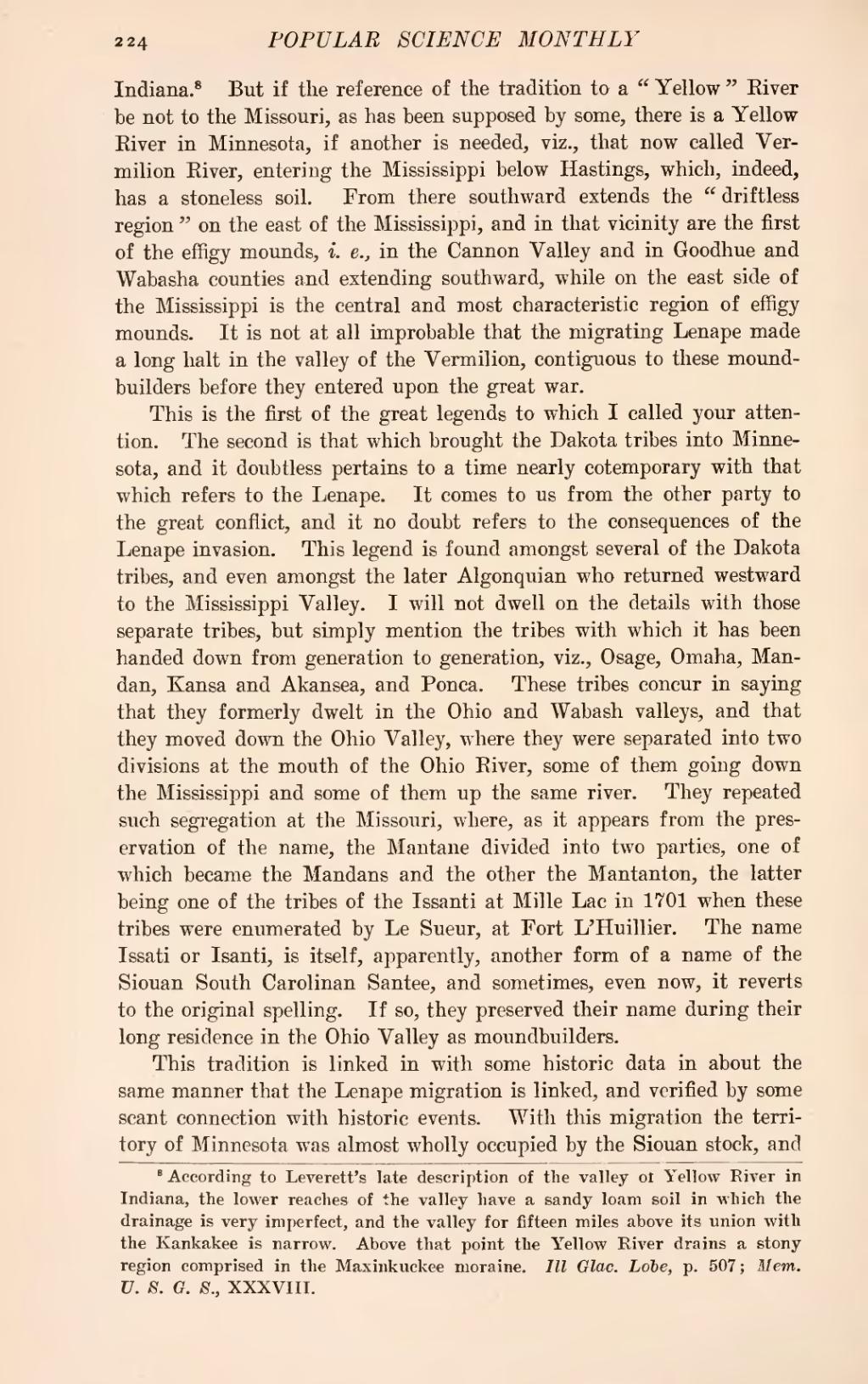Indiana.[1] But if the reference of the tradition to a "Yellow" River be not to the Missouri, as has been supposed by some, there is a Yellow River in Minnesota, if another is needed, viz., that now called Vermilion River, entering the Mississippi below Hastings, which, indeed, has a stoneless soil. From there southward extends the "driftless region "on the east of the Mississippi, and in that vicinity are the first of the effigy mounds, i. e., in the Cannon Valley and in Goodhue and Wabasha counties and extending southward, while on the east side of the Mississippi is the central and most characteristic region of effigy mounds. It is not at all improbable that the migrating Lenape made a long halt in the valley of the Vermilion, contiguous to these mound-builders before they entered upon the great war.
This is the first of the great legends to which I called your attention. The second is that which brought the Dakota tribes into Minnesota, and it doubtless pertains to a time nearly cotemporary with that which refers to the Lenape. It comes to us from the other party to the great conflict, and it no doubt refers to the consequences of the Lenape invasion. This legend is found amongst several of the Dakota tribes, and even amongst the later Algonquian who returned westward to the Mississippi Valley. I will not dwell on the details with those separate tribes, but simply mention the tribes with which it has been handed down from generation to generation, viz., Osage, Omaha, Mandan, Kansa and Akansea, and Ponca. These tribes concur in saying that they formerly dwelt in the Ohio and Wabash valleys, and that they moved down the Ohio Valley, where they were separated into two divisions at the mouth of the Ohio River, some of them going down the Mississippi and some of them up the same river. They repeated such segregation at the Missouri, where, as it appears from the preservation of the name, the Mantane divided into two parties, one of which became the Mandans and the other the Mantanton, the latter being one of the tribes of the Issanti at Mille Lac in 1701 when these tribes were enumerated by Le Sueur, at Fort L'Huillier. The name Issati or Isanti, is itself, apparently, another form of a name of the Siouan South Carolinan Santee, and sometimes, even now, it reverts to the original spelling. If so, they preserved their name during their long residence in the Ohio Valley as moundbuilders.
This tradition is linked in with some historic data in about the same manner that the Lenape migration is linked, and verified by some scant connection with historic events. With this migration the territory of Minnesota was almost wholly occupied by the Siouan stock, and
- ↑ According to Leverett's late description of the valley of Yellow River in Indiana, the lower reaches of the valley have a sandy loam soil in which the drainage is very imperfect, and the valley for fifteen miles above its union with the Kankakee is narrow. Above that point the Yellow River drains a stony region comprised in the Maxinkuckee moraine. Ill Glac. Lobe, p. 507; Mem. U. S. G. S., XXXVIII.
